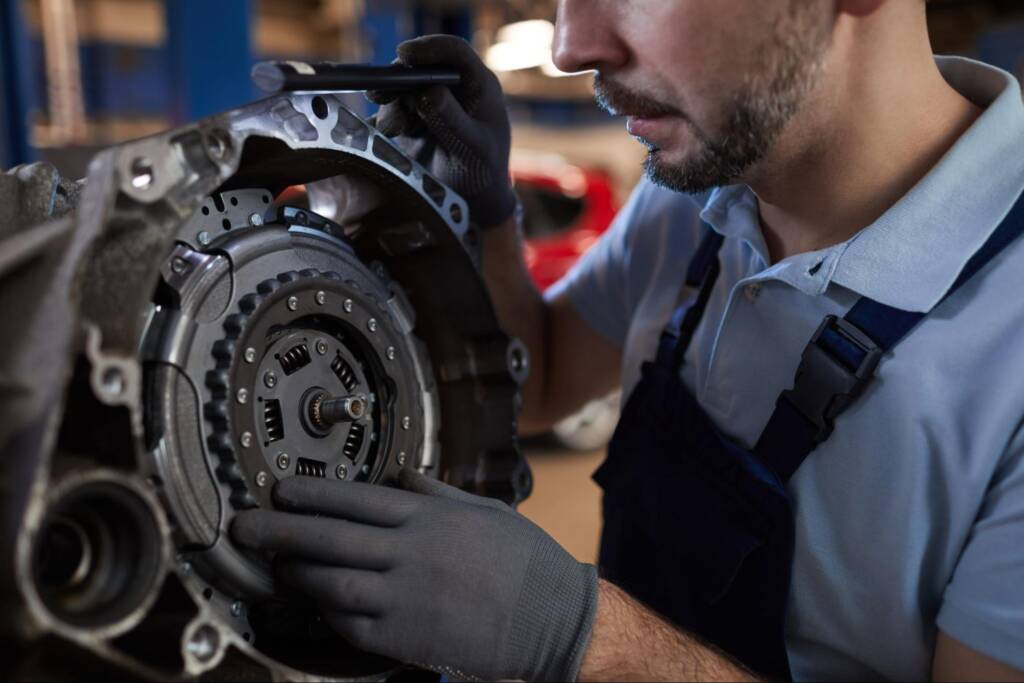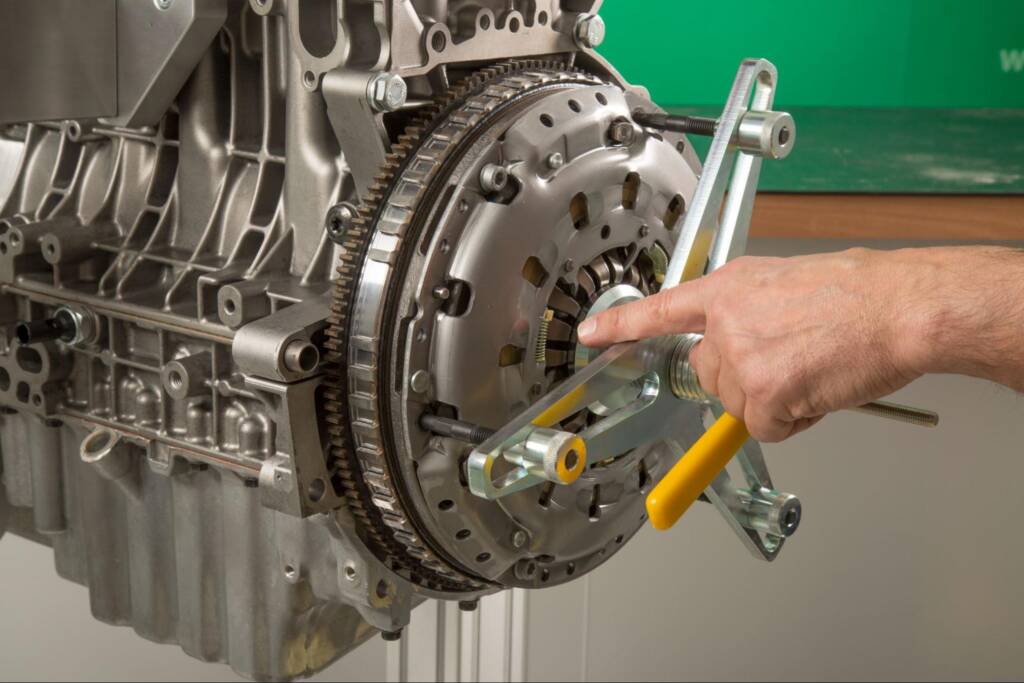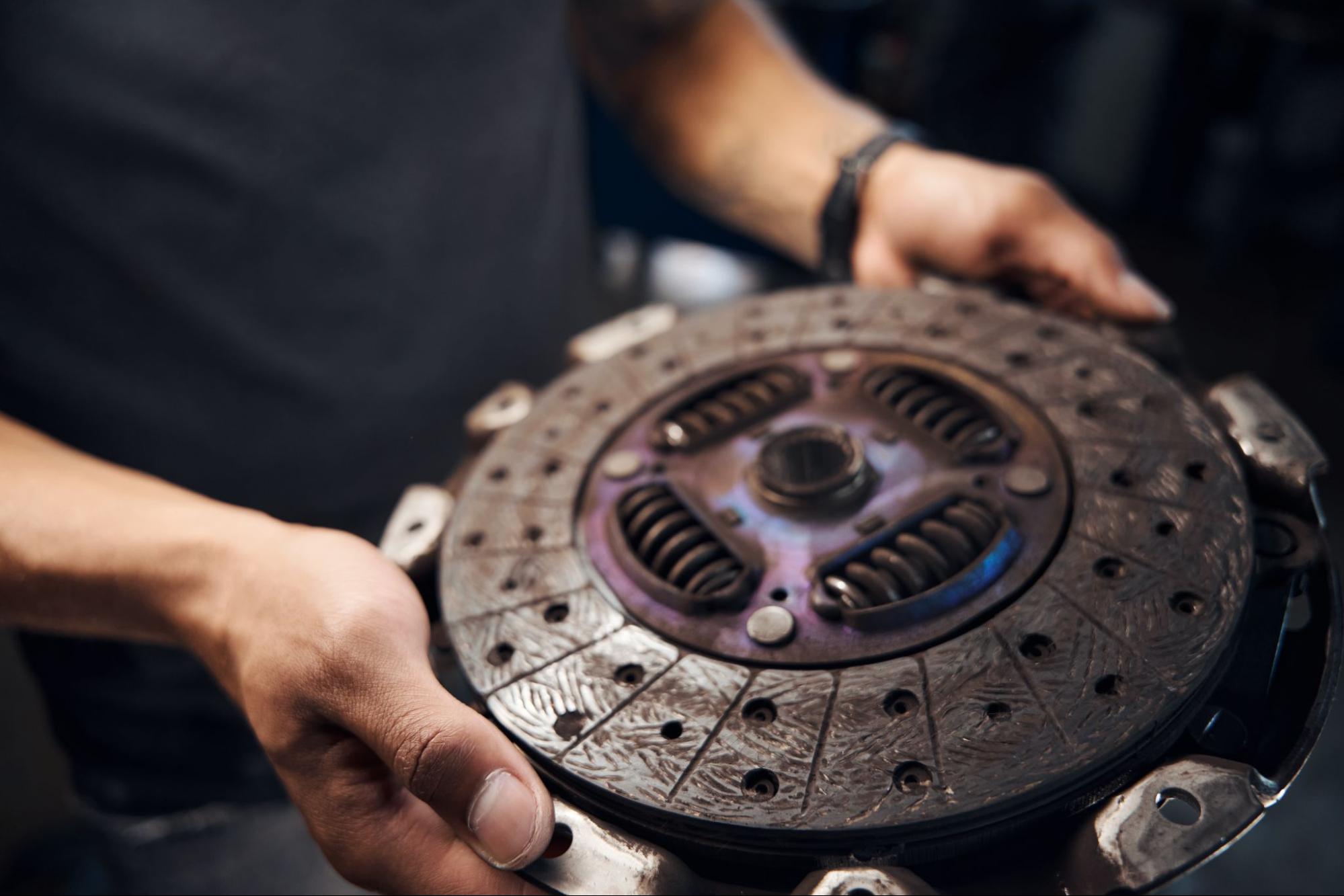Most drivers only think about the clutch when it starts slipping. Suddenly, gear changes feel rough, and the car doesn’t respond like it used to. For many, that means asking the same question: how long will this take to fix? Time matters when your car is in the shop. No one wants to wait longer than necessary or deal with unexpected delays.
What is a Clutch Replacement, and Why Does it Matter?
When the clutch fails, your car stops functioning as it should. Clutch replacement means removing worn-out parts and installing new ones that connect the engine and transmission. It isn’t a quick fix or a surface-level repair. It requires time, effort, and precision to complete the job correctly.
Understanding the Role of the Clutch
The clutch connects the engine to the wheels. It allows you to shift gears smoothly without stalling. Over time, the clutch wears out from heat, friction, and regular use. Hard driving or towing can wear it out faster. Once worn, it slips or fails to engage, making driving difficult and unsafe.
When a Clutch Replacement Becomes Necessary
Clutches don’t last forever. On average, a clutch lasts between 50,000 and 100,000 miles. If you notice slipping gears, strange noises, or a burning smell, it’s time for a check. Ignoring the signs may lead to further damage to the drivetrain. Handling clutch problems early can save money, time, and frustration.
How Long Does a Clutch Replacement Take on Average?
Clutch replacement time depends on multiple factors, including the car, the shop, and the technician’s experience. Some vehicles are easier to work on, while others require extra hours to access the clutch. Though there’s no one-size-fits-all answer, most repairs fall within a predictable time range. Understanding these differences helps you plan around the downtime and avoid surprises.
Standard Timeframe for Most Vehicles
Most clutch replacements take between three and seven hours, depending on the vehicle’s design and condition. Front-wheel-drive cars like the Honda Civic usually fall on the lower end, while rear-wheel-drive trucks or AWD vehicles often take longer. Labor guides used by shops offer estimated times, but real-world jobs can stretch due to rust, worn mounts, or stuck bolts. Suppose the flywheel needs machining or replacement; that adds an extra hour or two. Ask your shop if their estimate includes these variables so you’re not caught off guard.
Factors That Affect Clutch Replacement Time
The most significant time factors include the car’s make, drivetrain layout, and the type of clutch system used. Manual transmissions are usually quicker than dual-clutch or automated manuals, which require more precision and special tools. The technician’s experience and the quality of the shop’s equipment also play a significant role in determining the outcome. Cars with limited underbody space or complex exhaust systems take more time to disassemble. In older vehicles, rusted bolts and corroded parts can turn a routine job into a full-day project.
Clutch Replacement Time for Common Vehicle Types
Small front-wheel-drive vehicles, such as compact sedans, tend to be the quickest to service, often being finished within four to five hours. Mid-size SUVs and light trucks typically require more labor, usually around six to eight hours. European or luxury brands may take even longer due to tighter engine bays and specific part requirements. Cars with custom or performance clutch kits also take extra time to align and install properly. The more common your vehicle is, the more likely a shop is to repair it efficiently.

HHow Shop Type Affects Clutch Replacement Speed
The kind of repair shop you choose directly influences how fast the job gets done. Dealerships follow set procedures and sometimes book appointments days in advance, while independent garages may be able to fit you in sooner. Specialty driveline shops often operate more efficiently due to their focused expertise and access to specialized parts and components. Larger chain shops may handle quick repairs but can get backed up during busy seasons. Always ask how many technicians are available and whether the necessary parts are already in stock before booking.
How the Clutch Replacement Process Impacts Time
The shop’s workflow and staffing level directly affect turnaround times. Efficient shops plan better and work faster. A well-organized garage with seasoned techs can cut hours off the total. The shop’s diagnosis, part availability, and workload all shape the timing.
Diagnostic and Inspection Stage
Every replacement starts with a full inspection. The shop confirms that the clutch is indeed the issue. Technicians look for leaks, worn discs, and linkage problems. This step prevents unnecessary work and wasted time. A careful diagnosis avoids repeat visits.
Removal and Installation Steps
After the inspection, the teardown begins. Mechanics remove the transmission to access the clutch. It may involve eliminating axles, mounts, or exhaust parts. Installing the new clutch requires alignment and torque accuracy. Rushing through this phase often causes future problems.
Test Drive and Post-Replacement Checks
Once installed, the vehicle must be tested. Technicians verify gear shifts, pedal feel, and clutch bite point. If adjustments are needed, they will be made now. A quick road test confirms that the new clutch functions correctly. Final checks ensure long-term reliability.
Can a Clutch Replacement Be Done in One Day?
A same-day clutch replacement is possible but not guaranteed. Some repairs go smoothly with no setbacks. Others hit snags due to missing parts or complex layouts. Your vehicle type, appointment time, and shop efficiency all play a role.
Realistic Same-Day Scenarios
Some shops offer a same-day turnaround for standard cars. If the vehicle is front-wheel-drive and has no rust, the job is faster. Morning drop-offs improve your chances. Having the right parts in stock also helps. Smaller, simpler vehicles usually take less time.
When it Takes Longer Than a Day
More complex vehicles take more time. All-wheel-drive systems often complicate things. If the shop has to order special parts, delays are likely. Shops that close early or don’t operate on weekends may require more time. Replacing or resurfacing the flywheel can also add hours.
Clutch Replacement vs. Other Repairs: Time Comparison
Clutch replacement ranks high in complexity and time investment. Compared to simpler repairs, it requires more disassembly and effort. It shares some overlap with transmission work, but it remains a distinct task in its own right. Knowing how it compares can help you plan more effectively.

How it Compares to Brake Jobs or Timing Belts
Brake pad replacements usually take less than two hours. Timing belt jobs may take a bit longer, but they are often finished on the same day. Clutch work requires more disassembly and attention to detail. Unlike brakes, you can’t reach the clutch without removing the transmission. That’s why clutch repairs are more time-consuming.
Why Clutch Jobs Take More Time Than Expected
Clutches sit deep inside the drivetrain. Removing enough parts to reach them takes hours. Unexpected issues, such as seized bolts or damaged mounts, can cause delays. Aftermarket or racing clutches may need extra adjustments. Each step must be precise, or problems return quickly.
How to Prepare for a Clutch Replacement Appointment
Planning makes a clutch replacement less stressful and more efficient. Many delays occur due to miscommunication, part availability issues, or poor timing. Taking a few simple steps before your appointment can save hours and reduce frustration. A smooth repair process begins long before the work even starts.
What to Ask the Shop Beforehand
Before you book, ask the shop for a detailed time estimate. Determine if the estimate includes only the clutch or also covers the flywheel, pilot bearing, and slave cylinder. Ask whether the parts are in stock or will be ordered after drop-off. Clarify how long the test drive and inspection phase might take. These answers help you plan better and avoid waiting longer than expected.
Tips to Minimize Downtime and Disruption
Schedule your visit early in the day, preferably on a weekday. Mid-week appointments tend to move faster due to lower shop traffic. Ensure you have a ride arranged in advance so you’re not left stranded. Remove any valuables and personal items from the car. Let the service manager know how quickly you need the car back so they can prioritize accordingly.
Things to Watch for After a Clutch Replacement
After the work is done, take note of how the car feels. The clutch pedal may feel firmer or more responsive than before. Shifts should be smooth and consistent without grinding or slipping. Monitor fluid levels and inspect the underside of the car for any leaks. If anything feels off or unusual, call the shop immediately and have it rechecked.
Get Ahead of Breakdown With Clutch Replacement
Clutch problems don’t wait for a convenient moment to ruin your plans. They show up when you’re already late, miles from home, or halfway through an intersection. Waiting too long turns a manageable fix into a full-blown breakdown, and that’s not a gamble worth taking. A few hours in the shop today beats towing bills, missed work, or the risk of damaging your transmission tomorrow. Call your mechanic, clear your schedule, and get the clutch replacement done before your car decides for you.
Drive smarter. Explore more repair insights on the Dark Night Specialties blog.

